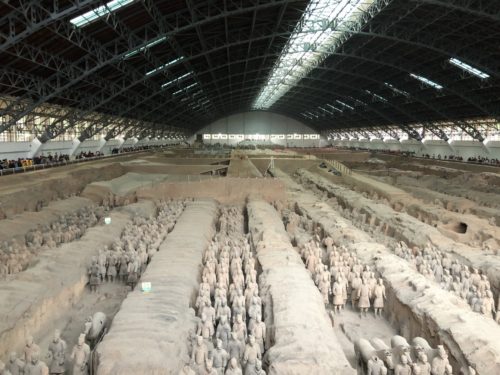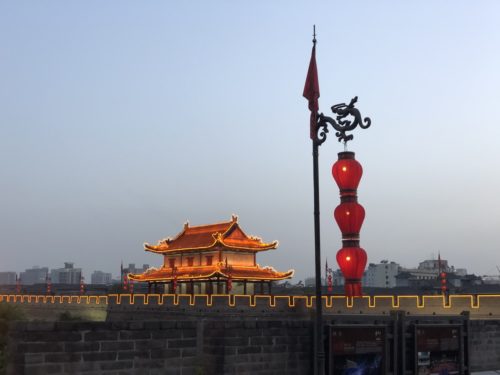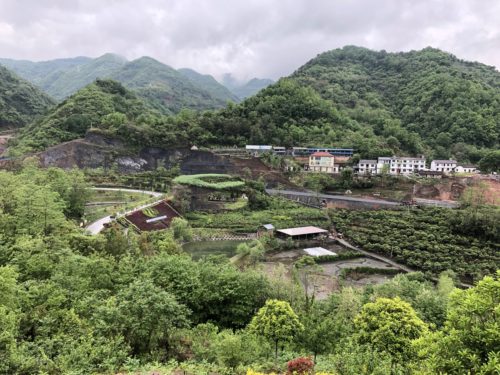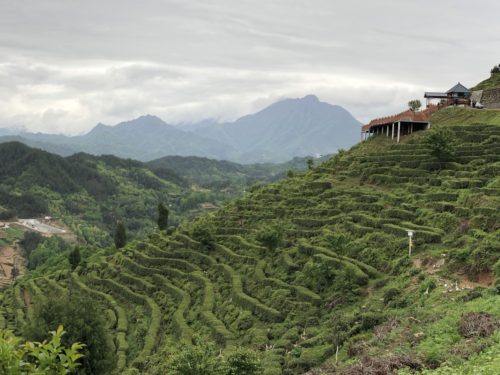Assessment of Small Watersheds in China
Simon Costanzo ·This April, I was fortunate to work with The Nature Conservancy’s (TNC) China Program on options for assessing watershed health. The project, sponsored by the Soil and Water Conservation Bureau in Shaanxi Province, aims to develop a tool to assess the health of small watershed areas restored by the Bureau in Shaanxi Province. Shaanxi is located in Northwest China and is home to tributaries of the Yangtze River to the South and Yellow River to the north and east. This provides a great opportunity to develop a tool that may be relevant to both river systems.
I started my trip in Xi’an, the current capital of Shaanxi Province, and ancient capital of China. It marks the eastern end of the Silk Road and was home to the Zhou, Qin, Han and Tang dynasties' ruling houses. Today it is one of China’s most popular tourist destinations due to the beautiful fortifications around the city (which you can ride bikes along) and the famed Bingmayong (Terra Cotta Army) which includes thousands of life-sized individually different warriors buried with China’s first emperor, Qin Shi Huang. I got to see both of these amazing historical treats.


The formal part of my trip began with a workshop in Xi’an hosted by TNC where various experts were brought together to be given an overview of the project objectives, and to provide advice on the best method for implementing the project of developing an assessment tool. The Bureau’s approach is to remediate very degraded watersheds (up to 50 km2) through partnerships with private industry and the local community. In summary, private industry is leased land with a mandate to remediate the land through business, whilst also providing income and job opportunities to the local people.

The workshop was followed by a two-day field trip to two prototype examples of small watershed restoration, led by the Bureau along the Hanshui and Lengshui Rivers to the southwest of Xi’an. The first example was an eco-demonstration park. The aim of this project was to remediate a small watershed via funding from tourism and fruit orchards. The park included a variety of soil and water conservation techniques, organic foods and beautiful scenery. It is also used as a tourist destination and education experience for school groups. The second example took a different approach and turned very steep degraded lands into an organic tea plantation, again creating a source of income and jobs for local people.
I liked the idea of starting at a small watershed scale. It makes the task at hand less overwhelming, achievable and cheaper. The combination of business venture and local community involvement resulted in some very proud representatives showing us their prized hard work.


About the author
Simon Costanzo

Dr. Simon Costanzo is a Science Integrator at the University of Maryland Center for Environmental Science in Cambridge MD. Simon’s career in environmental science over the past 20 years has been focused on developing and improving methods for the assessment, monitoring and management of aquatic, marine and terrestrial ecosystems. Simon has extensive experience in scientific data collection, synthesis, interpretation and communication. Simon’s career has provided a unique insight to a wide range of disciplines and stakeholder groups including government, academia and private industry. Dr. Costanzo obtained his academic training from University of Queensland in Australia (PhD).

